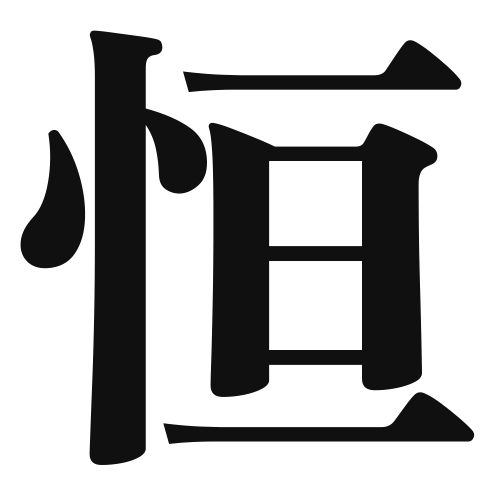1. Overview of Meaning
The kanji “恒” (pronounced “kou” or “hyou”) means “constant” or “perpetual.” It conveys the idea of something that remains unchanged over time, symbolizing stability and continuity.
2. Formation and Radical
Formation of the Kanji: The kanji “恒” is a compound character (会意文字) that combines elements to convey its meaning. It consists of the radical “恒” itself, which represents the concept of permanence.
Radical: The radical for “恒” is “心” (meaning “heart” or “mind”), which is often associated with emotions and thoughts, suggesting that constancy is tied to one’s inner feelings.
3. Examples of Usage
Common Words and Phrases: Some frequently used words that include “恒” are “恒久” (koukyuu – eternity) and “恒例” (kourei – established practice).
Example Sentences in Daily Conversation:
- このプロジェクトは恒久的な解決策を必要としています。 (This project requires a permanent solution.)
- 彼の恒例の習慣は毎朝ジョギングをすることです。 (His established habit is to jog every morning.)
4. Synonyms and Antonyms
Similar Kanji: A similar kanji is “持続” (jizoku – sustainability), which also conveys the idea of continuity but emphasizes the act of maintaining something over time.
Opposite Kanji: An antonym is “変” (hen – change), which signifies transformation or alteration, contrasting with the idea of constancy.
5. Cultural and Historical Background
Relation to Japanese Culture: The concept of “恒” is significant in Japanese culture, where stability and continuity are valued in various aspects of life, including relationships and traditions.
Proverbs and Idioms: One relevant proverb is “恒久の平和” (koukyuu no heiwa – eternal peace), which reflects the desire for lasting harmony in society.
